The Nuclear Regulatory Commission ( NRC) has granted a Design Certification Amendment to the AP1000® pressurized water reactor design from Westinghouse Electric Company. The AP1000 is a pressurized water reactor (PWR). It is currently the only Generation III+ reactor to receive Design Certification from the NRC. Generation I reactors were developed in 1950-60s, and none are still operating except in the UK. Generation II refers to the class of commercial reactors built up to the end of the 1990s. They generally had a design life of 30 to 40 years, but many have been extended to 50 to 60 years. Generation III (and III+) are designs incorporating improvements developed during the lifetime of the Generation II reactor designs. These include improved fuel technology, superior thermal efficiency, passive safety systems and standardized design for reduced maintenance and capital costs. According to Westinghouse, utilities in Georgia and South Carolina have been waiting for the AP1000 Design Certification so that they can move ahead with construction and operating license ( COL) applications. Westinghouse estimates that approximately 35,000 jobs will be positively affected by the construction of just two AP1000 units here in the United States. The NRC Design Certification is based on findings that the AP1000 design is safe and meets all regulatory requirements. This is the second time that the AP1000 design has gone through the rule-making process to receive Design Certification, the first certification being granted in 2006. Since 2006, the AP1000 design has been modified to meet additional NRC requirements, including those that require the design to withstand the impact of an aircraft crash on its shield building, a steel reinforced concrete structure approximately 3 feet thick that protects the steel containment vessel, which houses the reactor. Both the shield building and the containment vessel play significant roles in the passive safety systems of the AP1000 design, which are intended to shut down safely with no, or minimal, operator action and no AC power. The passive safety design was recognized by the NRC as providing added capability that allows the plant to safely cope with a Fukushima-type event, a significant reason why the NRC Near-term Task Force Review of Insights from the Fukushima-Daiichi Accident recommended the granting of Design Certification to the AP1000 design. The accident at Three Mile Island involved a pressurized water reactor; the Fukushima nuclear energy accident involved boiling water reactors. According to the Nuclear Energy Institute, there are no data indicating that pressurized water reactors are more or less safe than boiling water reactors. They both are licensed by the in NRC and operated to the same levels of regulatory requirements and safety.
car2go N.A., LLC, a wholly owned subsidiary of Daimler North America Corporation, and the City of San Diego have launched the first first all-electric car sharing network in North America. This network will make emissions-free driving available and affordable throughout San Diego. car2go is providing a free-floating network of vehicles that is available on-demand for point-to-point trips. Members can use car2go with or without a reservation, for as long as they would like, without having to commit to a return time or location. Members have access to the car2go network of electric vehicles 24 hours a day, seven days a week. When they're finished using the vehicle, members can park in a car2go-designated spot, at city non-restricted meters or on-street in residential neighborhoods within the car2go operating area. Parking, recharging, insurance and maintenance are included. Members pay by the minute, and only for the time they use the vehicle, with discounted rates for hourly and daily use. San Diego licensed drivers can register to become car2go members at sandiego.car2go.com or at the car2go San Diego office located at 633 9th Avenue in San Diego's East Village neighborhood. Currently, the membership fee of $35 is waived, and each new member will receive 30 free minutes of driving time. To stay informed of the latest news and events, members and prospective members can visit http://sandiego.car2go.com , join the car2go San Diego Facebook page at http://www.facebook.com/car2go.SanDiego or follow @car2go_SanDiego on Twitter.
 Littering is on the rise. For the past 15 years, I never saw any litter during my half-hour and one-hour morning walks through my suburban community. Just green lawns and lots of tall trees. But ever since the economy tanked and failed to recover, I'm starting to see trash on the side of the road and even on the edges of people's front lawns.
It started gradually about six months ago. A soda can here. A cigarette pack there. I started to bring a trash bag on my walks to pick up the two or three pieces of trash along the way. On this morning's walk, my bag was not big enough.
Who are all these people throwing trash out of their car windows? Perhaps a recent grad losing hope as he thinks about corporations outsourcing jobs and profits, while he tries to figure out how to pay off his student loans with a minimum wage job? Maybe a homeowner distracted by thoughts of bankers who used bailout money to pay themselves bonuses and who are now foreclosing on his home? Whoever these people are, they must be people who are starting to lose their sense of connection with the community.
Do you remember when the environmental movement started to get a head of steam in the US? It started shortly after Vice President Richard Nixon's famous kitchen debate with Soviet Premier Nikita Krushcev. Nixon told Krushcev that almost every American WWII veteran was able to buy a home with modern kitchen appliances. He could have added that they could get a college degree, or even a graduate or professional degree, without taking on any debt. This led to neighborhoods with a sense of community, and people who were secure enough in their own lives to be open to the idea of protecting the environment for future generations.
Yesterday, US Defense Secretary Leon Panetta told the press that he is looking at ways to balance the budget by cutting the pensions and health benefits of the soldiers who have been putting their lives on the line in Afghanistan, Iraq, and elsewhere.
I need a bigger trash bag.
John Howley
Woodbridge, New Jersey
When the U.S. Supreme Court decided American Electric Power Co. v. Connecticut, the blogosphere was filled with all sorts of opinions about what the future of GHG regulation might be . . . but very little in the way of cogent analysis. Fortunately, my good friend Stan Alpert has now weighed in with an analysis not only of the decision itself, but also the legal context in which it was decided and the practical business implications. Stan knows a bit about which he speaks. He is the former Chief Environmental Prosecutor in the U.S. Attorney's Office covering parts of New York City and all of Long Island, and he now advises companies on their compliance with climate change, GHG, and environmental laws and regulations. To read his brief yet illuminating analysis, click here.
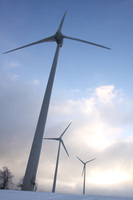 Samsung is investing $7 billion in Ontario to create the world's largest cluster of wind and solar power. When completed, the projects will generate 2,500 MWs of renewable energy -- providing power with zero ongoing fuel costs well into the future. Samsung and its partners are also establishing four manufacturing facilities in Ontario, creating 1,440 manufacturing and related jobs building wind and solar technology for use in Ontario and export across North America.
In the latest phase of the agreement, the Ontario Power Authority has signed power purchase agreements for 870 megawatts (MWs) of wind power. The agreements with Samsung and its partner, Pattern Energy Group LP, will provide enough clean energy to power more than 300,000 homes.
Constructing 870 MWs of wind power will create good-paying jobs in the short-term and additional jobs in operations and maintenance over the long term. The wind projects have also resulted in commitments from two other companies -- Siemens and CS Wind -- to build two new factories in Ontario. All the turbines used in the 870 MWs of wind power will be made in Ontario.
Private capital building clean energy and creating good paying manufacturing jobs? Maybe we can learn something from our friends up north.
John Howley
Woodbridge, New Jersey
A major issue with plug-in electric vehicles (EVs) is, where will you plug it in? With relatively limited range, the EV industry faces a chicken and egg problem. Mass numbers of people will not buy EVs until they are assured that they can recharge their vehicle just about anywhere, and mass installations of recharging stations will not happen until enough EVs are on the road to justify the investment.
EV and recharging station manufacturers have been developing innovative solutions to this conundrum, including teaming up with municipal parking lots and big box retailers to install recharging stations. Municipalities get an extra source of revenue, and retailers can run customer loyalty programs such as free recharging for customers who spend a certain amount of time or money inside the store.
Now Nissan has come up with yet another innovative marketing solution for EVs. Working with builders to pre-wire garages in new homes for recharging stations.
Nissan Americas and City Ventures – California's leading builder of affordable, eco-friendly homes in urban locations – have announced a cooperative project to pre-wire 190 Southern California townhomes currently under construction for electric vehicle chargers. The plan is for every home in nearly every new City Ventures development to include pre-wired parking spaces or garages, allowing easy installation of a Level II (240v/40 amp) electric vehicle charging dock, the recommended method to charge the Nissan LEAF at home.
The Nissan LEAF is the first and only 100-percent electric, zero-emission vehicle available to the mass market. Since its launch in December 2010, Nissan has delivered more than 4,000 Nissan LEAF electric vehicles in the United States. The Nissan LEAF currently is available in Arizona, California, Hawaii, Tennessee, Texas, Oregon and Washington, with additional markets launching later this year. To date, more than 350,000 people have expressed interest in the Nissan LEAF by signing up for updates, including information on how to purchase and reserve a vehicle.
Because target customers for the Nissan LEAF and City Ventures' residences share similar sensitivities and interests in environment issues, the project offers other benefits. For example, Nissan LEAF owners who buy a City Ventures' residence can use their home's solar panels to power their car. Of course, the existence of recharging station wiring in City Ventures' residences might also cause homeowners of the homes to consider purchasing a Nissan Leaf as their next car.
One small step in many respects. But once the EV and recharging station manufacturers put a few of these steps together, we could reach a tipping point for EVs.
John Howley
Woodbridge, New Jersey
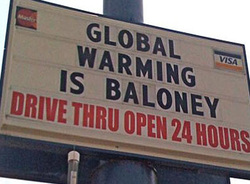 By their nature, scientific projections are subject to uncertainties and debate. For those who believe the catastrophic climate change projections are or might be wrong, I ask the following questions:
Should we continue sending billions of dollars out of the country to buy oil from people and governments that hate us?
Should we continue to burn coal, petroleum, and other fossil fuels that emit small particles triggering heart attacks and causing other coronary and respiratory ailments at a cost of at least hundreds of millions of dollars in increased medical expenses?
Should we allow Germany, China, India and a few other countries to become the global leaders in new clean energy technologies, creating highly-skilled and high-paying jobs (not to mention the highest employment rates in their respective histories), while we moan about the loss of good paying jobs in America?
Should we continue to subsidize oil companies that earn record profits and then keep as much of their profits as possible offshore to avoid paying taxes in the US?
Should we continue to waste energy in inefficient homes and vehicles like cartoon characters literally burning dollars?
Should we build renewable energy power plants that will have zero fuel costs in the future? Or should we build traditional power plants that will continue to consume ever-more-expensive fuels? Which option will help us build a competitive economy?
And lest you think I'm avoiding the climate change part of the equation........
What if you're right?
What if the climate change proponents turn out to be Chicken Littles? What terrible things happen if we reduce our dependence on coal and oil, reduce waste in our consumption of energy, reduce our emissions of pollutants, become energy self-sufficient, create new jobs in new technologies, eliminate hundreds of billions of dollars in government spending on wars to protect access to oil fields, and become the world leader in renewable technologies that have zero ongoing fuel costs?
What if we do all that and then find out that climate change is not happening? What will we have lost?
Now ask yourselves, what if you're wrong?
What if the majority of climate scientists are correct? What if our children, grandchildren, or great-grandchildren have to live (and die) with the effects of climate change feedback loops 50, 100, or 150 years from now. What will you have accomplished with your selfish insistence today that you and you alone know with certainty what the future holds?
Those of us who believe that the RISKS of climate change are real are not suggesting that we have all the answers or that the projections are perfect. But we are confident that diversifying our energy sources will be good for the economy, good for job creation, good for our quality of life, and yes, good for the environment that we and hopefully many long lines of descendants will live in.
John Howley
Orlando, Florida
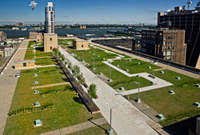 The US Postal Service (USPS) has avoided $400 million in energy costs since fiscal year 2007 by focusing on energy efficient designs and software to manage the efficiency of its operations and energy consumption. USPS operations today are using approximately 30% less energy than in 2003. One of the most visible efforts is the 2.5-acre "green roof" above the USPS Morgan Mail Processing and Distribution Facility in New York City -- the city's largest green roof. In its first year alone, the facility was able to avoid more than $1 million in energy costs and reduce energy consumption by 40 percent. The green roof also reduced pollution runoff between 35 to 75 percent, depending on the season. Plus, the green roof will last approximately 50 years. Other significant energy savings measures implemented by USPS include energy audits, employee education, and sophisticated energy management and controls systems. The USPS also adopted a number of different software systems to increase the efficiency of its basic business -- sorting and delivering the mail to every address in the US. The IT solutions include software to optimize mail sorting programs and reduce the number of partially filled mail trays; and an "Intelligent Mail" barcode system to improve mail routing and tracking. The USPS has also brought its suppliers into the process. By 2015, every supplier with a contract worth more than $500,000 will be required to submit sustainability data. The USPS also produces its own annual sustainability report detailing its energy consumption, carbon footprint and greenhouse gas (GHG) emissions, conservation efforts, goals, and progress towards those goals. John HowleyWoodbridge, New Jersey
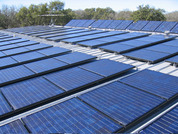 Solar panels in the northern hemisphere should generally tilt south to maximize the generation of energy. But in the US, solar panels are installed with a slightly westward tilt. Why? Because the power of physics is trumped by the power of economics and finance.
Electricity rates in the US are generally higher in the afternoon. A kilowatt-hour (kwh) generated by your solar power system in the afternoon is worth more than a kwh generated in the morning. So it makes sense to generate more kwhs of solar power in the afternoon, even if that means your solar power system loses more kwhs of potential generating capacity in the morning.
Yes, we are being intentionally inefficient when capturing the sun's power because that inefficiency generates more cash.
This is yet one more reason why the future of green and sustainable energy depends as much on economics, finance and government regulation as it does on the development of new technologies. Indeed, as we will discuss in future blog posts, government regulations that effect the economics and financing of green and sustainable energy will determine whether or not inventors can attract the investments necessary to develop new technologies.
John Howley
Woodbridge, New Jersey
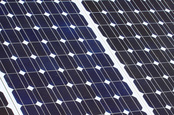 Private equity firm Kohlberg Kravis Roberts (KKR) joined with the world's largest reinsurance company, Munich Re, to purchase a 49% interest in solar power plants owned and operated by T-Solar Global SA. T-Solar is the largest owner-operator of solar power plants in Spain and Italy, with a generating capacity of 168 megawatts.
T-Solar will use the cash infusion to triple its solar capacity to 500 megawatts by 2014. As part of the deal, KKR and Munich Re have options to invest in future plants.
Also this week, France's AXA Private Equity announced that it has acquired 15 wind farms around Paris with a combined capacity of 163MW. The acquisition makes AXA Private Equity the fourth largest wind power operator in France.
These are just the most recent renewable energy deals by large private equity firms and insurance companies. In December, a Munich Re affiliate invested in 40 German wind turbines with a generating capacity 73 megawatts. In June, KKR formed a partnership with Sorgenia SpA to develop wind power projects in France. And Munich Re announced plans this week to invest another 2.5 billion euros in renewable energy assets “relatively quickly.”
Why are large private equity firms and insurance companies investing in renewable energy when countries such as Spain and the Czech Republic have cut subsidies for wind and solar projects? The fundamentals are very attractive. Costs for wind and solar keep coming down (and they have no ongoing fuel costs), while prices for fossil fuels for traditional power plants have remained high throughout the Great Recession and will only go higher once economic growth returns. The smart money knows that it can be very profitable to be in a business where your costs keep getting lower and your only competition will continue to get more expensive.
John Howley
Woodbridge, New Jersey
|






 RSS Feed
RSS Feed